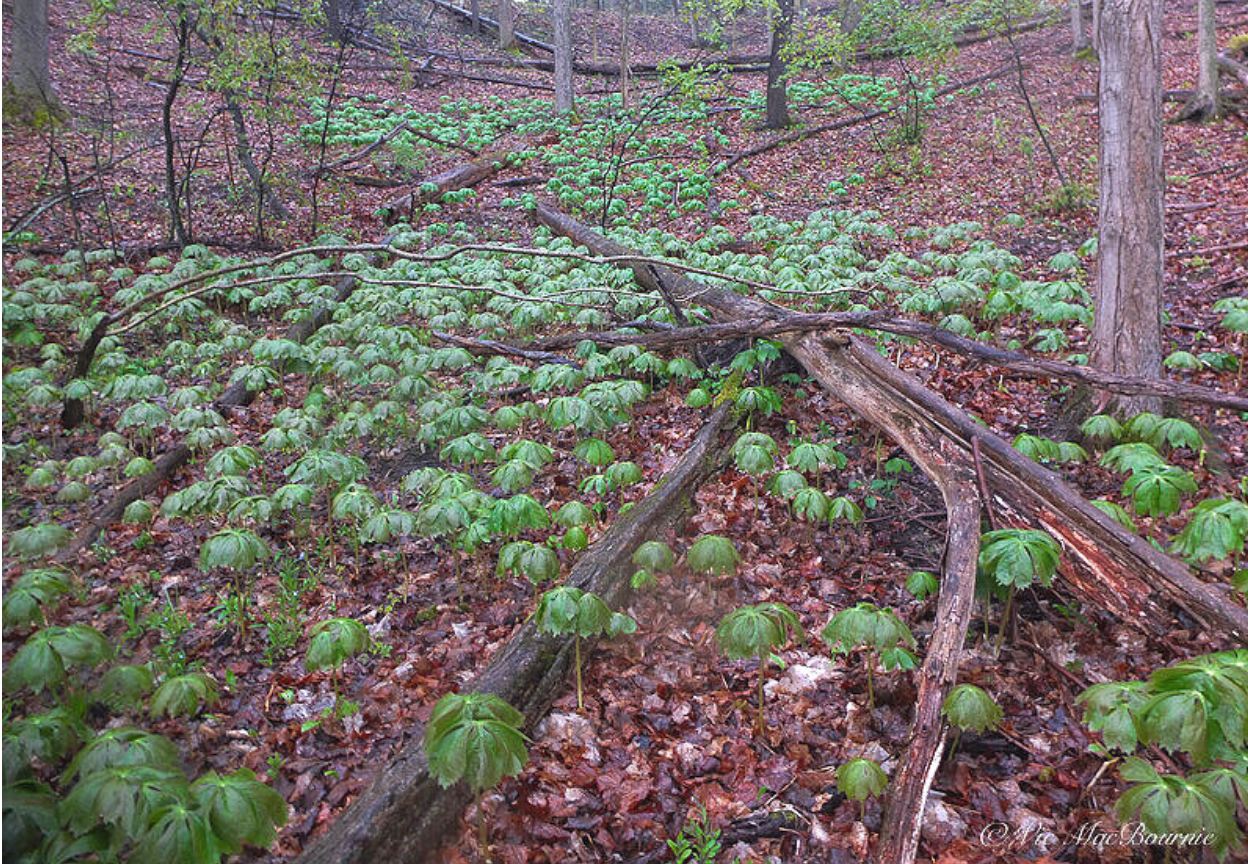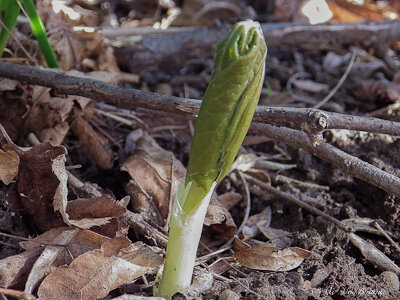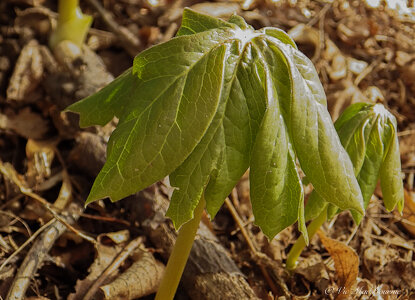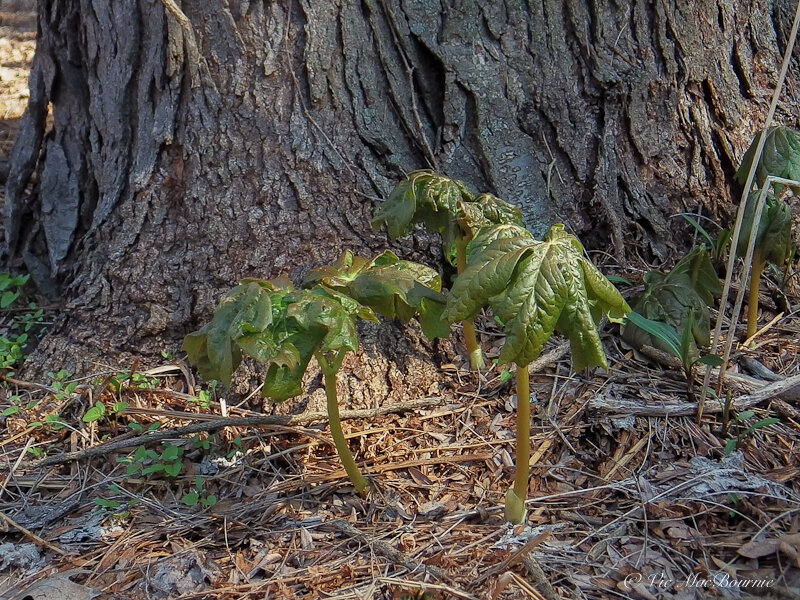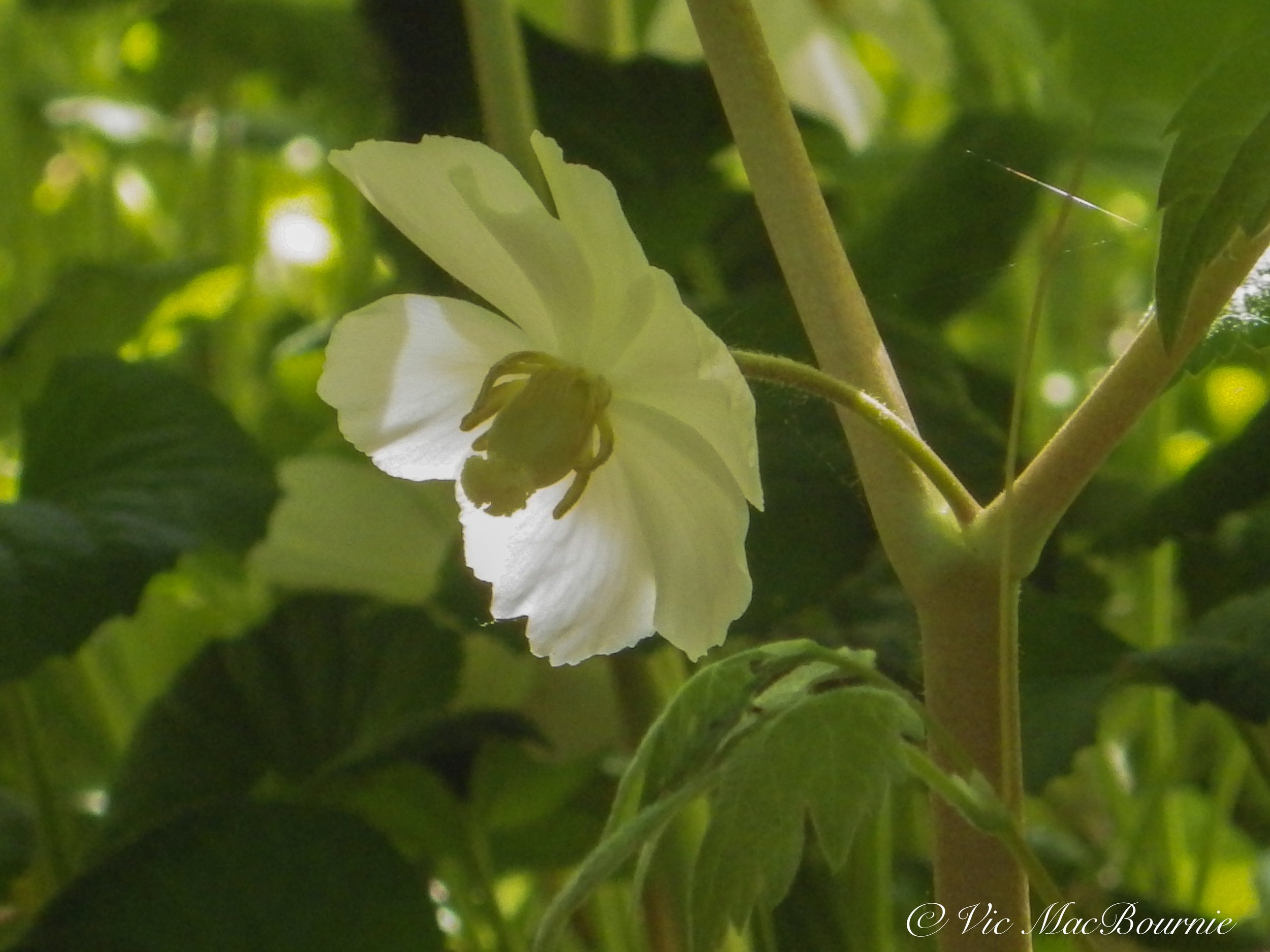The Mayapple: Carolinian zone woodland native wildflower
Early spring is the time for Mayapples to spread out across the forest floor and our woodland gardens. The spring ephemerals are native to southern Ontario and northeastern United States but stretch as far north as Quebec and as far south as Florida.
Tips for growing Mayapple in the woodland garden
Inspiration in the garden comes from many sources.
Gardens around our neighbourhood are often a good starting point. So too are our favourite gardeners on social media like Instagram and Youtube. The gardeners I follow are a constant source of new ideas and inspiration.
But for woodland gardeners the best source of inspiration is undoubtedly a local woodlot full of native plants trees and shrubs. (For article on the importance of native plants in the garden go here.
My woodland Mayapple inspiration can be traced back 20, maybe 30 years when, as a nature photographer, I roamed the woods in southern Ontario photographing wildflowers and anything else I could focus on.
That’s where I first encountered the Mayapple (Podophyllum peltatum).
This lovely swath of Mayapple grows wild near our home. When I stumbled upon it in the early spring it inspired me to consider growing large swaths of the ephemeral, underutilized native wildflower in our woodland garden.
Mayapple is one of the first Carolinian zone wildlflowers to emerge in the spring in the woodlands of southern Ontario and the northeastern United States, so it became a magnet for many of us photographers just looking for something, anything, to focus on in the early spring woodlands.
So, you can imagine that it didn’t take long for me to start growing a clump in my yard. Turns out it was so successful that I was able to spread it around where it continues to thrive in swaths throughout the garden.
The Mayapple is actually in the Barberry family and grows naturally everywhere in the eastern half of the United States stretching as far north as Quebec and south to Florida and Texas.
You’ll find Mayapple most often growing in moist, open woods and often growing on the edges of boggy meadows in zones 3 to 8. Although it enjoys moist woodlands, it does well in dry woodlands where, once colonized, can tolerate some drought.
These handsome plants are not just lookers, they are a larval host plant for the golden borer moth and the Mayapple borer.
Large colonies of Mayapple can be found growing from a single underground rhizoid stem where the central stalk of the plant emerges wrapped in either a single tightly furled leaf or a pair or more of leaves that slowly unfurl revealing mature specimens stretching 14 to 18 inches (30-40 cm) in height and blanketing large patches of ground completely shading the forest floor. The single leaf stems do not produce a flower or fruit, while the stems with two or more leaves produce 1-8 flowers in the axil between the leaves. The umbrella-like leaves can spread out 20-40 cm in diameter with 3-9 shallow to deeply cut lobes.
Any other plant with deeply-cut leaves like the Mayapple would be a superstar in most gardens but our native Mayapple suffers from a lack of notoriety in most traditional gardens.
Its beauty is certainly subtle.
Unlike the trillium that shines on the forest floor and lets all of us know when it’s in bloom, the Mayapple goes to great lengths to disguise its flower and the resulting fruit (a small golden apple-like fruit), even creating an umbrella to hide its large white flower from peering eyes.
Much like a hosta in a traditional garden, the Mayapple is mostly a quiet groundcover in the woodland garden. In fact, if you don’t get down on your hands and knees and peek under the large umbrella-like leaf, you may never even know that the plant is sporting a flower in the early spring and yellow fruit in the summer through fall.
Where to plant Mayapple in our garden
But that’s okay. We all need a little quiet in the garden and that’s where the Mayapple really shines.
As I write this in late April, my woodland garden is quite bare. But the Mayapple have already poked their heads out of the soil and are unfurling their large leaves to create a lush sea of green that continues to spreads each year throughout our woodland.
Anywhere in the garden where you have open shade or dappled sun and are looking for a natural groundcover is a good spot to consider planting Mayapple. Although it is considered a spring ephemeral and will go dormant in the summer, its spent leaves, stem and fruit are on display for a good part of the year.
Like many spring ephemerals, Mayapples like moist, humusy well-drained, slightly acidy to neutral soil.
The fruit ripens by late June into July and provides a food source for the fauna in our garden.
“Growing a natural habitat garden is also one of the most important things each of us can do to help restore a little order to a disordered world.”
Also known as Mandrake or the ground lemon, it’s important to note that the Mayapple is a toxic plant. The fruit, even the seeds of the fruit can be toxic. As the fruit ripens it becomes less toxic but unless you do your homework on this plant, it is best to grow it for the fauna in the garden rather than consider it edible in any way.
Chances are the neighbourhood raccoons and squirrels will get to the pungent odor of the ripened fruit long before you do anyway. The fruit ripens by late August and is a real treat for the deer and chipmunks in our garden who know precisely when it is safe to eat.
If you have not yet tried Mayapple in your woodland garden, consider growing a few plants in a quiet, shady corner of your garden. It won’t take long before you appreciate this seldom used plant for its early spring carpet of green, and interesting large leaves that will ring in your spring woodland garden.
Don’t be surprised if it makes itself at home and forms a lovely spring carpet of green right at the time you are craving a little green growth in the garden.
More links to my articles on native plants
Why picking native wildflowers is wrong
Serviceberry the perfect native tree for the garden
The Mayapple: Native plant worth exploring
Three spring native wildflowers for the garden
A western source for native plants
Native plants source in Ontario
The Eastern columbine native plant for spring
Three native understory trees for Carolinian zone gardeners
Ecological gardening and native plants
Eastern White Pine is for the birds
Native viburnums are ideal to attract birds
The Carolinian Zone in Canada and the United States
Dogwoods for the woodland wildlife garden
Bringing Nature Home by Douglas Tellamy
A little Love for the Black-Eyed Susan
As an affiliate marketer with Amazon or other marketing companies, I earn money from qualifying purchases.

